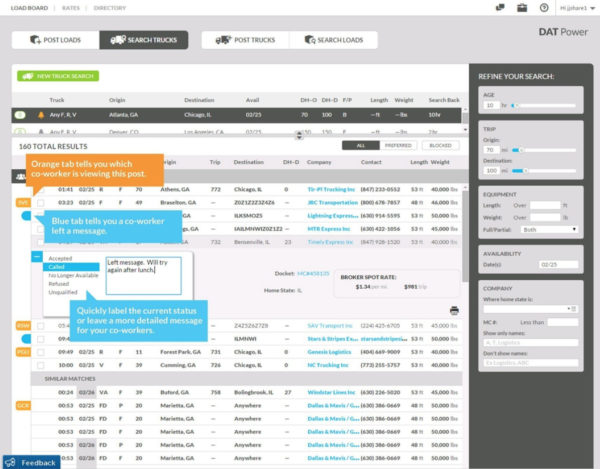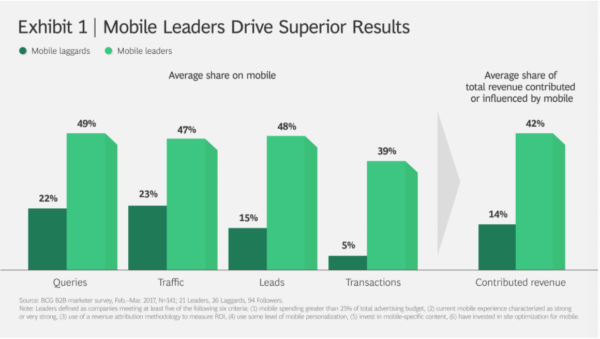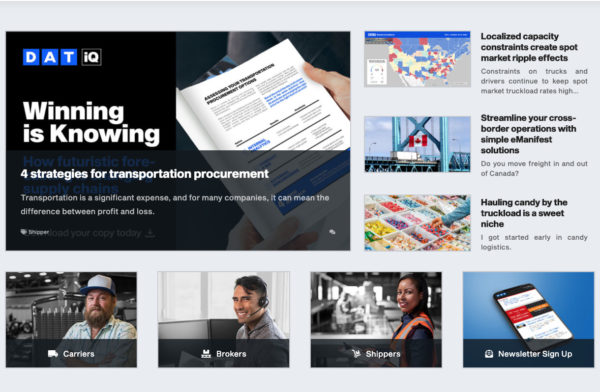
Finding profitable loads is the key to long-term success for truckers, but there are so many resources and so few hours in the day. Which actions could result in the maximum payoff? It would be much easier if truckloads just came to you.
It sounds like a lot to ask, but it’s not far from what happens when you get your load search strategy right. Sure, you’ll still have to check a few load boards — but when you develop a routine, you’ll get more from that search time. Meanwhile, by making connections with brokers and dispatchers and making sure your website is ready to receive them, you’ll start getting truckloads with little to no effort.
Read on to learn more about how to find truck loads using these strategies, plus how to start a blog that can set you apart from the competition.
In this post, we’ll cover how to:
- Choose the right load boards
- Network with brokers and dispatchers
- Overhaul your website
- Gather testimonials and reviews
- Start a blog
- Take the next steps
1. Choose the right load boards
If you get onto every load board you can find, you’ll end up sinking too much money into fees or waste your time searching for low-paying loads. Spend some time researching which load boards are highly recommended by industry insiders.
You’ll find the names of high-volume boards on Truckers’ Report, and trucker funding solution. RTS goes into depth about five load boards that are worth your time and money. Several of these boards have free trial options.
One of the boards that RTS recommends is DAT, which has the largest and best-established load board online. DAT’s board offers detailed data for every load, so you can choose the options that make the most financial sense for you. It also lets you look up information like a client’s credit score and time to pay, so you don’t waste time with disreputable clients.

2. Network with brokers and dispatchers
Where and how to find truck loads sometimes depends on your connections. Brokers and dispatchers both find loads for you to haul, saving you time and increasing your options.
A broker serves as the intermediary between shippers and carriers. They negotiate separately with both parties, so many of them make commissions by charging shippers more than they pay to carriers. There may also be an additional commission.
Dispatchers work directly for you as the carrier. Their commission is usually a percentage of the rate they negotiate with you, in exchange for finding you truck loads.
Choosing someone to work with
If you decide to work with a broker, make sure they’re licensed and insured. Ask them how they match carriers to loads and check their credit to make sure that they’ll pay on time.
Find out if they belong to any trade groups like the Transportation Intermediaries Association (TIA), which holds members to a certain code of ethics. That’s not mandatory, but it can give you peace of mind.
Dispatchers may be members of the TIA, but they don’t have the same insurance requirements. They may not need licenses in some states. Verify the dispatcher’s experience and references before you hire.
Building the relationship
The best way to get good rates on loads is to build strong dispatcher and broker relationships. Follow these pro tips:
- Communicate clearly about every load — especially regarding pick-up, drop-off, and any possible delays
- Quote realistic time frames
- Follow a set process for booking a job
- Have all required paperwork easily accessible
- Update the broker regularly, especially after drop-off
When you’re easy to work with, a broker or dispatcher will be more motivated to find you more loads.
3. Overhaul your website or build a new one
Working with brokers and dispatchers is no substitute for having your own website.
The more you work with third parties, the more polished and professional your website needs to be. Your site should include at least four pages:
- A Home page: This page identifies what you do and who you work with, as well as why shippers or brokers should choose you over other carriers,
- An About page: Here, you should talk about the story of your company and what sets you apart. Are you known for your on-time record? Do you have a goods securement process that keeps the product secure? Add that information in this section.
- A Services page: This is where you list and describe what you offer to shippers. Do you offer packing? Loading and offloading? Are you qualified to carry loads across international borders? Enumerate those services here.
- A Contact page: Place your home base location and ways for brokers or shippers to hire you in this section. If you have a dispatcher you work with, you can include their contact information here, as well.
Throughout your site, include calls to action — those buttons that invite people to do something, like “Contact us” or “Request a quote.”
As you design your website, make sure that it’s mobile-responsive. Mobile traffic makes up more than 50% of all website traffic globally, and 60% of business-to-business transactions rely heavily on mobile device use.

4. Gather testimonials and reviews
Sometimes the question is not how to find truck loads but how to maintain connections with customers so they will keep coming back to you — and hopefully tell other people about your services.
Your website is a great place to showcase testimonials and reviews from past customers. They show that you’re experienced and prove that you’ve done great work in the past.
Because reviews are less routine in the trucking industry than in some other fields, brokers and shippers won’t always think to leave you a review. Start making a habit of asking for reviews when you confirm load delivery with a shipper or carrier. With Constant Contact, it’s easy to create an email template for this purpose so you won’t forget.
5. Start a blog
Blogging is another marketing strategy that hasn’t been as widely adopted in trucking. Again, it’s a chance to stand out. Shippers and brokers always need to know what’s happening in the industry, and if you’re the one to provide that information, you instantly come across as more valuable and trustworthy.
The authoritative content that search engines love can be published through blogging, which means that the strategy can help you to rank higher when brokers or shippers look for carriers near you.
Starting a blog is easier than you think. If you create your website with Constant Contact, it takes just a few clicks to add a blog. Then, decide how often you want to post and what you want to write about. Gear your content to your audience. For example, if you’re trying to attract the attention of brokers, post about the business of trucking.
Too busy to create your own content? No problem. Find a freelancer with experience in trucking content and work out a deal.

The next steps
Now that you’ve gathered a few ideas for how to find truck loads, it’s time to put your best options into practice. Check out a few of the load boards recommended above and search for reputable brokers and dispatchers who might be a good fit. Meanwhile, polish up your website and start collecting reviews.




